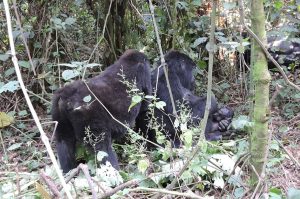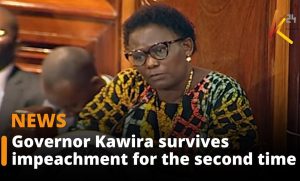Why war on hate speech is hard to win.
The National Cohesion and Integration Commission says last year it received two to three complaints a day about hate speech. Police, on the other hand, say they get more alerts. Following the recent heightened political activity surrounding prosecution of six Kenyans at the International Criminal Court and mobilization for the 2012 elections, there have been calls on the NCIC to crack the whip on politicians bent on stirring up ethnic passions that could yet again plunge the country into chaos.
Others have even urged the media to shun highly charged rallies where the tongues of certain politicians drip with poison. Clearly, there is serious concern in Kenya today about hate speech.
This anxiety was vindicated on April 7 and 8, 2011, when the six Kenyans suspected of masterminding the 2007/8 post-election violence made their initial appearance at the ICC. Presiding Judge Ekatarina Trendafilova of Pre-Trial Chamber II told them that the court was aware that “there are movements towards retriggering the violence in Kenya by way of delivering dangerous speeches.”
She warned them that such speeches could be perceived as a breach of one of the conditions set out in their summonses to appear, which prohibits them to continue committing crimes within the court’s jurisdiction. “Accordingly, this might prompt the Chamber to replace the summonses to appear with warrants of arrest.”
Judge Trendafilova stated that she was issuing a general warning to all the suspects, but no one in Kenyan had any doubt about who the court had in mind. Weeks before the ‘Ocampo Six’ traveled to The Hague, two of the suspects, Deputy Prime Minister Uhuru Kenyatta and suspended Higher Education Minister MP William Ruto, had held rallies in parts of the country where they delivered fiery speeches especially targeting Prime Minister Raila Odinga.
They or their henchmen vilified the ICC as well, depicting it as a kangaroo court used by Odinga in an attempt to scuttle their presidential ambitions in the 2012 elections. The politicians also appeared to use the ICC issue to rally their ethnic blocs behind them.
In reaction to the speeches, the Internal Security Ministry and the NCIC cautioned Uhuru and Ruto and their allies against hate speech. NCIC chairman Dr Mzalendo Kibunjia accused the leaders of pursuing a “scorched earth policy” in their war of words with the PM. Odinga himself was not innocent. He had uttered some unsavory things about Uhuru and Ruto at political rallies, but later kept his cool.
Despite these worrisome exchanges no one was arraigned in court, even though hate speech is a crime in Kenya under the National Cohesion and Integration Act. The Constitution as well proscribes the vice. Indeed nobody has been convicted for hate speech even in the face of growing public apprehension about potentially harmful speeches.
A case against three politicians charged last year with the crime in the heat of the campaigns for the referendum on the Constitution was still in the courts at the time of writing this report.
The first hurdle in the war against hate speech is the lack of clarity about what constitutes the crime. Section 13 of the National Cohesion and Integration Act states as follows:
“A person who –
(a) uses threatening, abusive or insulting words or behaviour, or displays any written material;
(b) publishes or distributes written material;
(c) directs the public performance of a play;
(e) distributes, shows or plays a recording of visual images; or
(f) provides, produces or directs a programme;
which is threatening, abusive or insulting or involves the use of threatening, abusive or insulting words or behaviour commits an offence if such a person intends thereby to stir up ethnic hatred, or having regard to all the circumstances, ethnic hatred is likely to be stirred up.”
A person convicted under this section is liable to a fine of not more than Sh.1 million or to imprisonment to one year, or both.
Now, whereas Sec. 13 (3) defines ethnic hatred as “hatred against a group of persons defined by reference to colour, race, nationality or ethnic or national origins,” some important concepts under this law are undefined. What, for example, exactly constitutes abusive or insulting words or behaviour in each of Kenya’s languages? What are threatening words? How will the law deal with coded messages and innuendo in vernaculars that on the face of it sound quite harmless?
The fact that the courts have not issued any ruling on a case of hate speech compounds the difficulty of definitions. It is the job of the courts to interpret the law.
Political talk
NCIC commissioner Halakhe Waqo says the commission has faced lots of difficulties determining what hate speech is under the law, even though the commission is aware of the power of dangerous speech to stir up ethnic animosity.
“During electioneering seasons, the best politician is the one who delivers the worst statements,” Waqo says. “But our difficulty has been identifying what could cause ethnic hatred and what is merely targeted at individuals.”
It is not a frivolous point. When Uhuru Kenyatta was criticized for his speeches reported in the media, he came out to state that he was not guilty of hate speech. His words, he said, were targeted at Odinga and not the Luo community. That makes sense as far as the law on hate speech is concerned. Strictly speaking, Uhuru was not disparaging the Luos. But it is a useless argument in the Kenyan political context.
Ethnic groups have their unofficial political chieftains and Odinga is such a figure among the Luos, just like Kenyatta now is among the Kikuyus. It is inconceivable that an attack on Odinga (or any other ethnic chieftain for that matter) by an ‘outsider’ would be seen by the rest of the community as a personal matter best left to him. It would be considered an affront to the entire community.
In the book, ‘Ethnic Conflicts in Africa: A Comparative Analysis’ (CODESRIA, 1998), Nigerian scholar Okwudiba Nnoli writes that, because ethnicity defines for the individual the totality of his existence, including embodying his hopes, fears and sense of the future, “a poor villager believes that a cabinet minister from his village represents his own share of the national cake, even though he may never receive any personal reward as a result of the appointment.”
It therefore follows that a vicious verbal attack on a prominent politician would most certainly be seen as an attack on the community he or she comes. It is for the same reason that a Kenyan politician facing, say, corruption charges would claim that his community is being targeted by their enemies.
So, whereas in the eyes of the law Kenyatta’s fiery exchanges with Odinga would likely be seen as a personal matter between the two, in reality the speeches help (and indeed have helped) shape the feelings of the Kikuyus and the Luos about each other.
The use of certain vernacular words is particularly problematic, as they are generally ethnic stereotypes. ‘Kihi’ in Kikuyu means an uncircumcised lad, but could be, and often is, used as an insult. But the word can also mean immature. Used in reference to a Luo leader (the community traditionally doesn’t circumcise boys) the term is quite offensive.
Linus Kaikai, the Managing Editor Nation Media Group Broadcasting Division, suggests that the law should have delineated the criminal ethnic stereotypes and banned them. “When you speak of circumcision as a stereotype, does the law cater for it?” he poses.
NMG, he says, has a policy against airing inflammatory language even when the words are directed not at communities but at an individual. Maybe if the hate speech law had an index of inflammatory words, the media would help fight the vice by editing them out.
But in reality, how easy is it drawing up a list of offensive words, when apparently innocuous words and phrases could be turned around by cunning speakers to convey very offensive ideas? Ethnic stereotypes are stored in a community’s collective mind. New words can always be coined, or existing words reassigned new meanings, to express the intended stereotype.
Frowning on lies
Perhaps this cultural complexity and the lack of clarity in the hate speech law is the reason why the Kibunjia Commission doesn’t put a lot of emphasis on hauling suspected hate mongers to court. Rather, the Commission has been issuing them with warnings about their utterances. “The level of achievement should not be judged on how many people have gone to jail but on how much we have controlled,” says Waqo. Warnings apparently force the politicians to tone down their rhetoric – at least for a time.
Caesar Handa, a communications researcher with Strategic Research supports this approach. Trying to prevail upon politicians to change their tactics in political mobilization would be better than prosecuting them for dangerous speech. “The issue is how as a nation we can create a culture that frowns at lies and offensive language,” Handa says.
But the Police are of the view that hate speech is rampant and proper law enforcement would effectively deal with the problem. “Going by the reports we receive daily, there is much more hate speech than what the NCIC receives, but there is no clarity about what the Police should do,” says Police Spokesman Eric Kiraithe. He suggests the law should empower a police officer at a rally to immediately arrest a speaker whom he thinks has violated the hate speech law.
Kiraithe also believes the media has worsened the problem by carrying inflammatory statements by politicians. A law should be enacted to stop the media from doing this. “It is outrightly pretentious to say that in Kenya the media can operate without a law”, he says, adding that “the concept of media freedom is seriously abused.” The Police Spokesman further says that, “There would be little impact of hate speech if it doesn’t pass through the media.”
Well, the media was accused of playing a role in fanning the post-election violence of 2007/8 by, among other things, uncritically carrying reports and political utterances which incited Kenyans. Certain vernacular radio stations were condemned as platforms for hate speech. Kaikai admits that this is still going on. “Once a politician is sure that what he says will go on TV he feels encouraged to use hate speech. We need to sensitize the media on hate speech so that it does not end up perpetuating it,” he says.
World attention
The concern in Kenya about hate speech comes at a time when there is increased global attention to the subject. There are international legal instruments against speech crime, including Article 20 of the International Covenant on Civil and Political Rights which proscribes advocacy of national, racial or religious hatred. And there was the international trial and conviction of Rwandan media persons accused of incitement to genocide. But hate speech per se is only being seriously discussed now.
“The whole question of hate speech is an issue that has not been sufficiently dealt with until now,” says the United Nations Special Rapporteur for Promotion and Protection of Freedom of Opinion and Expression Frank La Rue. “But all of a sudden it is becoming very relevant for various reasons: the Danish cartoons of Prophet Mohammed, the church minister in Florida, US, who wanted to burn a Koran, etc.”
La Rue believes the debate is important, but insists that care must be taken to ensure the fight against hate speech does not hurt freedom of expression. “Hate speech must be speech that immediately leads to discrimination, violence or some form of hostility,” he says. “You can have a negative opinion of someone, but that does not necessarily become hate speech.”
But that is not the way the issue is understood in Kenya. NCIC commissioner Waqo says nowadays people seem to think that any negative thing said about an opponent amounts to hate speech. The matter has also been politicized, with politicians accusing their rivals of hate speech and calling on the NCIC to investigate when, as a matter of fact, the law has not been flouted. And when the NCIC does not act, it is accused of ineptitude or bias.
Waqo says that many of the complaints the commission has received about hate speech are without merit. He gives the example of allegations made against the PM Odinga last year by PNU activist Moses Kuria and those made against Transport Minister Chirau Mwakere. The commission did not find any breach of the law.
American law professor Susan Benesch is researching hate speech under an 18-month project that covers Kenya, called ‘Dangerous speech on the road to genocide’. A senior fellow at the World Policy Institute in Washington, Prof. Benesch is a consultant to the UN Special Advisor on the Prevention of Genocide.
She confirms that “inflammatory speech seems to be an ineluctable part of the social process that helps to bring about mass violence”, but cautions that “all forms of incitement can be confused with legitimate non-criminal speech, especially political speech, since the latter often features stereotyping and prejudice, falsehoods, generalization, and appeals to emotion and fear.”
To protect freedom of expression, it is therefore necessary to strictly define hate speech and other forms of dangerous speech. Prof. Benesch defines hate speech as “speech that attacks or disparages a group or a person for characteristics purportedly typical of the group.”
Audiences experience the harmful effects of hate speech in two ways: directly and indirectly. On one hand, a speaker may address a person or group that the speaker purports to describe (the victim group) in order to offend, frighten or humiliate that audience directly.
On the other hand, the speech may be directed at a different audience with the goal of causing that audience to share the views expressed or implied in the speech and to respond against the victim group with discrimination, hostility or violence. The dangerous speeches politicians make when addressing their own people fall in this category.
Identifying hate speech
Speaking in Nairobi recently, Prof. Benesch proposed a five-point method to establish the “dangerousness” of a speech:
1. The speaker: Did the speaker have authority or influence over the audience? If so, what kind? Influence need not derive from a formal political post. Cultural and religious figures and entertainers often even have more influence over an audience than political figures have.
2. The audience: Who was the principal audience for the speech or the audience most likely to react to it? Was the speech directed primarily at members of the group it purported to describe, that is, the victims, or at members of the speaker’s own group, or both? If the latter, the speech might bring indirect harm by inciting the audience.
It is also important to find out if the audience has the means or capacity to commit violence against the group targeted in the speech. If a group is unable to commit mass violence, incitement cannot succeed.
Was the audience fearful? This is particularly important for predicting an audience’s vulnerability to incitement. Did the audience have access to alternative views or sources of information?
3. Content of the speech: Was the speech understood by the audience as a call to violence? Did the speech describe the victim group as other than human? Did the speech assert that the audience faced serious danger from the victim group? Did the speech contain phrases, words or coded language that has taken on a special loaded meaning, in the understanding of the speaker and audience? Did the speech echo previous, similar messages?
4. Socio-historical context: Were there underlying conflicts between the assumed victim group and the main audience for incitement? Were there recent outbreaks of violence following other examples of hate speech? Was the audience suffering economic insecurity?
5. Mode of transmission: Was the speech transmitted in a way that would increase its force, e.g. via a media outlet with particular influence, or set to compelling music?
Perhaps Prof. Benesch’s analytical framework could help the Kibunjia Commission, law enforcement agencies and the courts to better identify hate speech and sanction its perpetrators, while protecting every citizen’s right to free speech as guaranteed by the Constitution.




